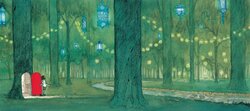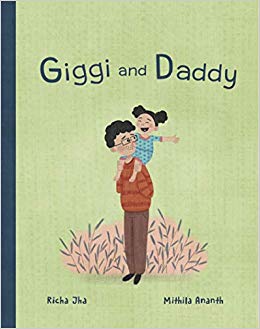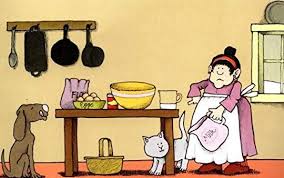|
Ideally, I would like the parent to feel empowered and go with their gut feeling when it comes to reading, but here are some strategies you might like to keep in mind.
0 Comments
I am not one to participate in competitions, probably because of the fact that I never win. Like really, do people actually win the lottery? A few weeks ago, a competition popped up on my newsfeed, I nearly scrolled passed, but a quick glance and I knew I just had to participate! The competition required us to share the craziest thing my husband has done with my daughter- three best replies would receive a free copy of the Giggy And Daddy, a Fathers Day special. Sharing my response here, but please don’t judge us!
My husband did a solo trip to London in the winter with my daughter when she was only 3 years old. He carried a portable jet spray because his biggest concern was taking her to the washroom and cleaning her without this genius invention 😂 sorry for the info! And I won! Here’s a little summary of the book: There’s a story Giggi’s Daddy tells her every day. It’s about a little bit of this and a little bit of that and a whole lot of everything. And it all begins when Giggi wasn’t even born. But does Giggi believe her's daddy's tall tales? Jha and Anand pair up again after The Manic Panic and create a relatable, feel-good story about the relationship between a father and daughter. Giggy’s daddy loves sharing the story of becoming a father, a totally made-up, over the top one at that! In his version of her birthing story, he attends a “Super School For Daddies” and tells Giggy that she grew in his pocket. One of the spreads shows Daddy with 6 arms changing Giggy’s diaper, feeding her, making her hair and reading her books. He tells Giggy that he would do anything for her, even buy her a dinosaur! I remember when I was pregnant with my daughter, my husband grew a bigger pregnancy belly than me, slept more nights with the newborn than I did and would probably swap day jobs with me in the blink of an eye. He imagines himself to be this larger-than-life, do-it-all, father, with the six hands and all, but then reality strikes and work takes over. He’s out of the house 10 hours a day, six days a week and eventually questions his involvement as a parent. At the climax of the story, Giggy cracks up at Daddy’s made-up story, he walks away, deflated. Eventually, Giggy tells Daddy her OWN real version of Daddy- the man who lets her do his hair, makes her laugh and teaches to ride a bicycle. And in that, this story becomes timeless, an ode to all fathers and a testament to the fact that a “paternal instinct” is just as valuable as the mothers. Congratulations to Jha and Anand, their exceptional attention to detail, will leave the reader finding something new with every read!  I sometimes see a particular kind of picture book described as a “quiet book.” I think perhaps that phrase has different meanings for different people but that, generally speaking, a quiet book is one that leaves the reader room for contemplation. Perhaps it can also mean a book with inherent ambiguities in part or in full, a book that asks more questions than it provides answers. My four year old was gifted the book ‘Journey’ by Aaron Becker and according to the New York Times it is a ‘masterwork’. The only caveat, there is no text. But don’t quiver just yet. The strong visual narrative makes it so easy to tell the story of this girl and her adventure, the reader will surprise himself. The beauty of a wordless wonder like Becker’s is that there are a myriad of possibilities predominately spurred by the storyteller’s creativity! According an article by Samantha Brown for the Tiny Owl Publication, Art is a universal language and the illustrations in wordless picture books unite readers in a way that language-based books just can’t. Since the illustrations do all the talking this makes the story accessible to all readers, irrespective of age or gender and the possibilities for imagination are infinite. Using picture clues is an important comprehension strategy as it increases children’s vocabulary by encouraging them to use language that they would otherwise not use. In David Wiesner’s Flotsam, a bright and curious boy discovers a strange camera and through it, takes the reader on an underwater adventure. As my daughter and I immersed ourselves in this little treasure, she learned new words like barnacle and ashore. She thoroughly enjoys re-telling different versions of the tale to her pretend toys. Silent books give an early reader a break from decoding the syntax and allow them more space to explore the story itself. Tomie de Paola’s ‘Pancakes for Breakfast’, is the perfect book for an emergent reader who needs a break from all that reading! It is set on frothy winter morning when an old lady living on a farm decides she wants to have pancakes. It is a simple tale, but there’s room to play around with interesting words. The reader is left to his own devices to select how many components he would like to add to the mix and in this regard the story can be as simplistic or as detailed as the storyteller decides. As Walter Fochesato, one of the leading scholars in children’s literature, points out words that there to help you understand, but they are not necessary. He goes on to state that it is surprising that there is underestimation and prejudice for wordless books. Consequently, the idiom, ‘a picture is worth a thousand words’ certainly holds true for wordless books. In some cases, words can be limiting, giving the reader a prescribed pattern to follow. Alternatively, visual narratives make room for everyone to tell their version of the story and that’s what makes them so precious. |
Categories
All
Archives
January 2024
Categories
All
|


 RSS Feed
RSS Feed